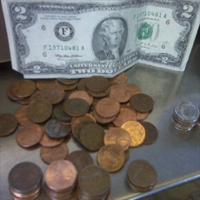
Rndballref
20 Years Experience
Chicago, IL
Male, 60
For twenty years I officiated high school, AAU and park district basketball games, retiring recently. For a few officiating is the focus of their occupation, while for most working as an umpire or basketball referee is an avocation. I started ref'ing to earn beer money during college, but it became a great way to stay connected to the best sports game in the universe. As a spinoff, I wrote a sports-thriller novel loosely based on my referee experiences titled, Advantage Disadvantage
As an offensive player, you are entitled to only your vertical space. If your elbows are outside your body's vertical space then any contact is a player control foul.
5-7 year olds should not be playing traditional full court basketball (in my opinion). They would learn the game better in half court, 3 on 3, with supervision stopping plays on fouls but not shooting free throws. Just my opinion.
By the way, I have always maintained that lower level high school, and grade school games are harder to officiate than Varsity games. The reason is that in Varsity games, a ref calls what they see - in lower level games you have to decide what NOT to call, otherwise you ruin the game.
Yes you can. The same blocking and picking rules apply.
This is a new one for me! Yes, I would call it unsportsmanlike.
Antiques Dealer
 What's the most profit you've ever made from a single item?
What's the most profit you've ever made from a single item?
Fashion Model
 What's the most lucrative type of gig models can book?
What's the most lucrative type of gig models can book?
Toll Collector
 What happens when a car blows past a tollbooth without paying?
What happens when a car blows past a tollbooth without paying?
It would count as a three point shot. It does not matter where the defender is standing.
I dont know about fiba but in nfhs thst is true.
Sorry, I am no expert on Fiba rules.
-OR-
 Login with Facebook
Login with Facebook (max 20 characters - letters, numbers, and underscores only. Note that your username is private, and you have the option to choose an alias when asking questions or hosting a Q&A.)
(A valid e-mail address is required. Your e-mail will not be shared with anyone.)
(min 5 characters)
By checking this box, you acknowledge that you have read and agree to Jobstr.com’s Terms and Privacy Policy.
-OR-
 Register with Facebook
Register with Facebook(Don't worry: you'll be able to choose an alias when asking questions or hosting a Q&A.)